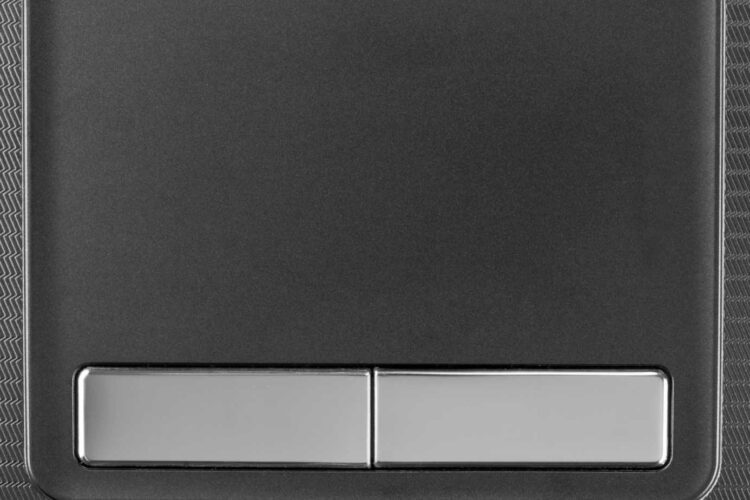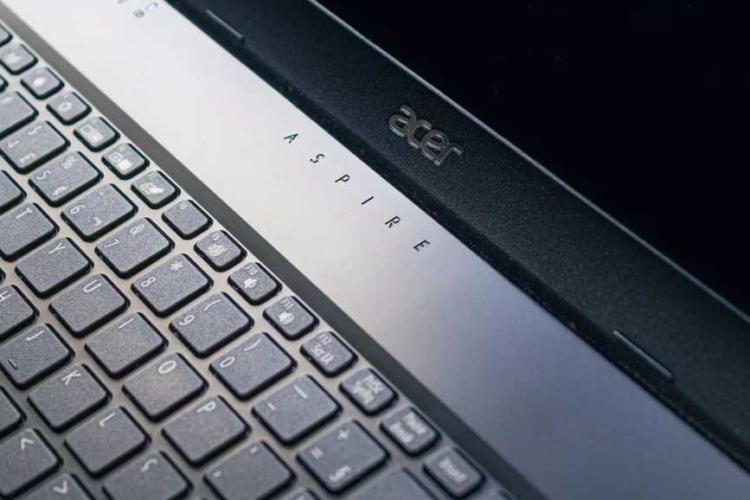Keeping your laptop touchpad clean and well-maintained is crucial for smooth operation and longevity. A touchpad filled with dirt, dust, or grime can lead to poor performance and even hardware damage. By following proper cleaning and maintenance routines, you can avoid frequent repairs and extend the life of your laptop. This guide provides detailed instructions and tips on how to effectively clean and maintain your laptop’s touchpad, ensuring it remains in top condition. Regular maintenance not only keeps your touchpad functioning optimally but also enhances your overall user experience.
Why It’s Important to Clean Your Laptop Touchpad
A dirty touchpad can significantly affect your laptop’s performance. Accumulated dirt and grime can make the touchpad less responsive, leading to frustrating user experiences. Regular cleaning helps in preventing these issues, ensuring that your touchpad remains sensitive and accurate. Moreover, a clean touchpad reduces the risk of hardware damage that might arise from liquid spills or dirt entering the internal components. Ignoring the touchpad’s cleanliness can also lead to long-term damage. Dirt particles can scratch the surface, and oils from your fingers can cause it to wear down more quickly. Over time, this might necessitate costly repairs or even a complete replacement of the touchpad. A poorly maintained touchpad can also affect the overall hygiene of your laptop, as it can become a breeding ground for bacteria and germs. The touchpad is one of the most frequently used parts of a laptop, making it prone to collecting dirt, oils, and other residues. These contaminants can interfere with the touchpad’s sensors, leading to erratic cursor movements and other issues. For those who use their laptops for professional or educational purposes, a malfunctioning touchpad can significantly disrupt productivity. Therefore, regular cleaning is not just about maintaining the device but also about ensuring a seamless user experience.
Tools and Materials Needed for Cleaning
To clean your laptop’s touchpad effectively, you’ll need the following tools and materials:
- Microfiber Cloth: Essential for wiping down the touchpad without scratching it. Microfiber cloths are designed to capture dust and debris without leaving behind fibers or scratches, making them ideal for delicate surfaces like a laptop touchpad.
- Cotton Swabs: Useful for cleaning the edges and corners. Cotton swabs can reach into the tight spaces around the touchpad and remove dirt that a cloth might miss.
- Isopropyl Alcohol (70%): Helps in disinfecting and removing oils. Isopropyl alcohol evaporates quickly and is safe for use on electronic components when used in moderation.
- Mild Dish Soap: Can be used for gentle cleaning. A mild soap solution can break down oils and grime without being too harsh on the touchpad’s surface.
- Compressed Air: Ideal for blowing out dust from hard-to-reach areas. Compressed air can remove particles lodged under the touchpad or around its edges.
- Glass Cleaner (Ammonia-Free): An alternative cleaning solution. Ammonia-free glass cleaners are effective at removing smudges and fingerprints without damaging the touchpad’s coating.
Each of these items plays a specific role in ensuring your touchpad is thoroughly cleaned without causing any damage. Using the right tools and materials not only makes the cleaning process more effective but also helps protect the touchpad from potential damage caused by inappropriate cleaning agents or techniques.
Step-by-Step Guide to Cleaning Your Laptop Touchpad
- Preparation:
- Turn Off Your Laptop: Always start by turning off your laptop and disconnecting it from any power source. This step is crucial to avoid any electrical accidents and to ensure you don’t accidentally trigger any functions while cleaning.
- Remove the Battery (If Possible): If your laptop allows for easy battery removal, take it out. This extra step adds a layer of safety, preventing any electrical discharge during cleaning.
Initial Cleaning:
- Dry Wipe: Use a dry microfiber cloth to remove surface dust and debris. This initial wipe helps get rid of loose particles that could scratch the touchpad when you start using cleaning solutions.
- Gentle Motion: Be gentle to avoid pushing dirt into the touchpad’s edges. Light, circular motions are effective and prevent damage.
- Deep Cleaning:
- Dampen the Cloth: Use a small amount of water or a mild cleaning solution (equal parts water and vinegar) to dampen the microfiber cloth. Wring out excess liquid thoroughly to ensure no drips can enter the laptop’s internals.
- Wipe the Touchpad: Gently wipe the touchpad in circular motions. This helps lift off any stuck-on grime without causing abrasion.
Stubborn Stains:
- Use Cotton Swabs: Dampen cotton swabs with isopropyl alcohol to clean the edges and corners. Cotton swabs are perfect for reaching small crevices that a cloth cannot.
- Moderation is Key: Avoid using too much liquid to prevent it from seeping into the touchpad. Excess moisture can damage the electronics underneath.
Disinfecting:
- Alcohol Wipe: Lightly dampen the cloth with isopropyl alcohol and wipe the touchpad. This step disinfects the surface, removing oils and bacteria.
- Ensure Safety: Alcohol evaporates quickly, but ensure the touchpad is completely dry before powering the laptop back on.
Drying:
- Final Wipe: Use a dry microfiber cloth to wipe the touchpad. This ensures all moisture is removed.
- Air Dry: Allow the touchpad to air dry completely before turning the laptop back on. This prevents any residual moisture from causing damage when the device is powered.
Maintenance Tips for Longevity of Your Laptop Touchpad
Regular maintenance is key to keeping your touchpad in optimal condition. Here are some tips:
- Frequent Cleaning: Wipe the touchpad with a dry cloth daily to prevent dirt buildup. Regular cleaning prevents grime from accumulating and becoming harder to remove.
- Hand Hygiene: Wash and dry your hands before using the laptop to minimize oil transfer. Clean hands reduce the amount of residue left on the touchpad.
- Avoid Eating Near Your Laptop: Crumbs and spills can cause significant damage. Food particles can lodge under the touchpad and liquids can seep into the electronics.
- Use a Protective Cover: A touchpad protector can prevent scratches and grime. These covers are often made of thin, transparent material that doesn’t interfere with touch sensitivity but provides an extra layer of protection.
Creating a routine cleaning schedule, such as weekly or bi-weekly cleanings, will help maintain the touchpad’s functionality and appearance. Consistent maintenance not only keeps the touchpad clean but also extends its lifespan by preventing wear and tear.
Troubleshooting Common Touchpad Issues
Sometimes, even with regular maintenance, issues can arise. Here’s how to troubleshoot common problems:
- Unresponsive Touchpad: Ensure the touchpad is clean and dry. Restart your laptop to see if the issue resolves. If the problem persists, check the touchpad settings in the control panel.
- Erratic Cursor Movement: Adjust the touchpad sensitivity settings. This can often fix problems where the cursor jumps or moves unpredictably. Also, check for driver updates that might improve touchpad performance.
- Physical Damage: Inspect the touchpad for scratches or damage. If cleaning doesn’t help, consult a professional for repair or replacement. Physical issues often require expert attention and attempting repairs yourself can void warranties or cause further damage.
If you encounter persistent problems that cleaning and basic troubleshooting can’t fix, it’s advisable to seek professional laptop repair services. Timely professional intervention can prevent minor issues from becoming major problems and can ensure your touchpad is restored to full functionality.
Conclusion
Maintaining a clean and well-functioning touchpad is essential for optimal laptop performance. Regular cleaning, using the right tools and techniques, can prevent many common issues and prolong the life of your touchpad. By following the steps outlined in this guide, you can ensure your touchpad remains responsive and accurate, enhancing your overall laptop experience. Remember, a little maintenance goes a long way in keeping your device in top shape. Incorporate these practices into your regular device care routine to enjoy a seamless and efficient user experience. Regular maintenance not only enhances the touchpad’s performance but also contributes to the overall health and longevity of your laptop, saving you from frequent repairs and replacements.
FAQs
Can I use alcohol wipes to clean my laptop touchpad?
Yes, you can use alcohol wipes to clean your laptop touchpad. Ensure the wipes contain isopropyl alcohol with a concentration of 70% or less. Alcohol wipes effectively disinfect and remove oils and grime from the touchpad. Be gentle and avoid excessive moisture to prevent damage. Always let the touchpad dry completely before turning your laptop back on.
How to clean a greasy trackpad?
To clean a greasy trackpad:
- Turn Off and Disconnect Your Laptop: Ensure your laptop is powered off and unplugged.
- Initial Wipe: Use a dry microfiber cloth to remove surface dust and debris.
- Dampen the Cloth: Lightly dampen a microfiber cloth with a solution of equal parts water and vinegar or 70% isopropyl alcohol. Wring out excess liquid.
- Wipe the Trackpad: Gently wipe the trackpad in circular motions to remove grease and oil.
- Use Cotton Swabs: For corners and edges, use cotton swabs dampened with isopropyl alcohol.
- Dry the Trackpad: Use a dry microfiber cloth to wipe down the trackpad and ensure it is completely dry before turning your laptop back on.
Can a laptop touchpad be removed?
Yes, a laptop touchpad can be removed, but the process can be complex and varies depending on the laptop model. It often involves disassembling parts of the laptop, which can void the warranty or cause damage if not done correctly. If you need to remove or replace your touchpad, it is recommended to seek professional help or refer to your laptop’s service manual for specific instructions.
How do I get rid of a sticky touchpad?
To get rid of a sticky touchpad:
- Turn Off and Disconnect Your Laptop: Ensure your laptop is powered off and unplugged.
- Initial Cleaning: Use a dry microfiber cloth to remove any loose dirt or debris.
- Dampen the Cloth: Lightly dampen a microfiber cloth with a mild cleaning solution (water and a few drops of dish soap) or 70% isopropyl alcohol. Wring out excess liquid.
- Wipe the Touchpad: Gently wipe the touchpad in circular motions to remove the sticky residue. Avoid using too much liquid.
- Use Cotton Swabs: For stubborn sticky spots, use cotton swabs dampened with isopropyl alcohol to clean the edges and corners.
- Dry the Touchpad: Use a dry microfiber cloth to wipe down the touchpad and ensure it is completely dry before turning your laptop back on.




